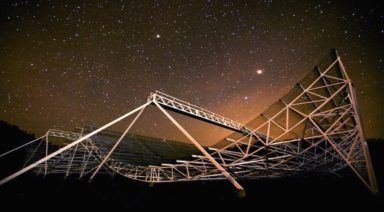Scientists Are Now Using Sound Waves to Regrow Bone Tissue

The future of regenerative medicine could be found within sound healing by regrowing bone cells with sound waves.
The use of sound as a healing modality has an ancient tradition all over the world. The ancient Greeks used sound to cure mental disorders; Australian Aborigines reportedly use the didgeridoo to heal; and Tibetan or Himalayan singing bowls were, and still are, used for spiritual healing ceremonies.
Recently, a study showed an hour-long sound bowl meditation reduced anger, fatigue, anxiety, and depression, which is great news for mental health. But now, a new study out of the Royal Melbourne Institute of Technology in Australia, showed physical healing using sound waves.
Scientists used high-frequency soundwaves to turn stem cells into bone cells in a medical discipline called ’tissue engineering,’ where the goal is to rebuild tissue and bone by helping the body to heal itself.
The researchers shot sound waves at tissue cells for 10 minutes a day over the course of five days. This magnified image shows stem cells turning into bone cells after being treated with high-frequency sound waves.
Co-lead researcher Leslie Yeo explained, “[W]e can use the sound waves to apply just the right amount of pressure in the right places to the stem cells, to trigger the change process.”
Professor Yeo and his team have spent over a decade studying sound wave effects on different materials, and have learned to use sound waves above 10 megahertz for the best results. In the past, the researchers point out, experiments to turn stem cells into bone cells were cost-prohibitive to scale up, and as cells had to be harvested from patients’ bone marrow, it could be extremely painful. But in this experiment, they used multiple types of cells, even fat cells that are much easier to extract from a patient.
They further argue that since the sound waves created in this experiment were generated by a low-cost microchip, their process will be quicker, easier, and less expensive than other methods. The next major challenge ahead: scaling the process so it can be put into medical use.
5G Tech Could Significantly Impair Weather Forecasting Satellites

Concerns over 5G health risks are coming to a head, and while early adopters and tech junkies want it implemented as quickly as possible, a good percentage of the public is wondering why legislation ensuring radiation safety standards from wireless technology are almost nonexistent.
And now there’s even more reason for trepidation toward 5G, namely that it will set back weather forecasting technology by roughly four decades.
At least that’s according to the National Oceanic and Atmospheric Administration which issued a warning to lawmakers and wireless telecom giants trying to impinge on its satellite radio frequency bandwidth used to monitor our increasingly volatile climate and warn us of impending natural disasters. No big deal.
“The way 5G is being introduced could seriously compromise our ability to forecast major storms,” Tony McNally of the European Center for Medium-Range Weather Forecasts told the Guardian. “In the end it could make the difference between life and death. We are very concerned about this.”
That’s because the FCC offered the 24-GHz frequency band to wireless carriers earlier this year, the same range (23.6 -24 GHz) in which water vapor signals in the atmosphere are picked up by NOAA’s and other agencies’ weather satellites and microwave sounders. According to estimates, allowing 5G to live on this frequency would result in somewhere between a 30 to 77 percent data loss for NOAA satellites and bring our weather prediction capabilities to the same proficiency it had in 1980.
But that’s not all; similar auctions of other frequency bands used to detect snow, ice and clouds are also being scheduled for sale.
The US Navy even weighed in on the situation, saying that interference with this frequency range “will result in a partial-to-complete loss of remotely sensed water-vapor measurements.”
Of course, there seems to be a relatively simple solution to this problem – stricter regulation, a little bit of forethought, and maybe the patience to consult with experts in the field about the potential dangers of these new technologies before we just let our technocratic overlords run footloose and fancy-free.
Now if anyone calls you a Luddite for being apprehensive toward the rash construction of a sweeping 5G network, you have yet another example to give of just how recklessly Big Wireless and the FCC are acting. This doesn’t mean we can’t have nice things, let’s maybe just consider all the potentially negative outcomes before blindly building them.
For more on the dangers of wireless radiation, check out Resonance: Beings of Frequency:



































